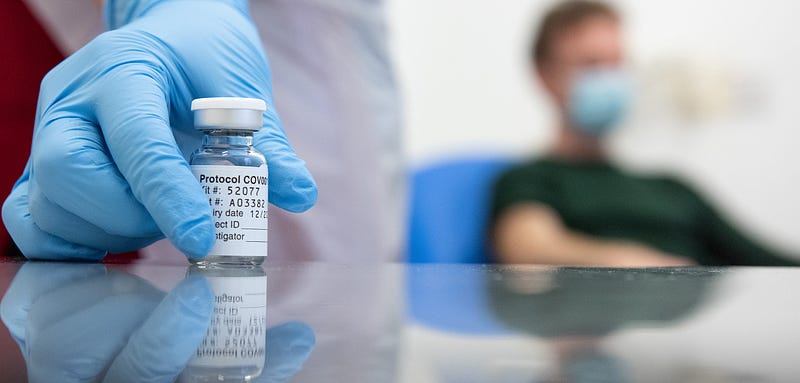
Sitting in the gym at the SUNY Polytechnic Institute vaccination site after receiving my shot, I landed on a
global infographic
from the
New York Times
highlighting a whopping 67 countries, concentrated mostly in Africa and the Middle East, with a dark red to signify zero vaccine doses distributed. The surplus of vaccine doses in Oneida County and the surge of student vaccinations on campus had left me feeling optimistic for the first time in a year. With my own arm aching, the hope resting in my chest began to fizzle out as I stared at those scarlet gaps on my phone.
A pandemic begs a certain unity. At the beginning of the coronavirus outbreak, pundits referred to the virus as the “great equalizer,” bringing humans of every race, nationality, and income bracket together under a shared umbrella of fear. However, a year later, we know this specific claim is far from true: in the U.S., COVID disproportionately affects people of color, with minorities suffering higher
infection and mortality rates
as well as the brunt of COVID’s
negative economic consequences
. But that doesn’t mean unity has lost its relevance. Achieving some level of normalcy undoubtedly requires equal access to vaccination, nationally and globally. To put the pandemic behind us, we need to put up an international front.
Despite national vaccination proceeding
six weeks ahead of schedule
, vaccines are not going to the areas that need them most. In analyzing vaccine rollout from December through March, the CDC reported that “vaccination coverage was 1.9 percentage points higher in low vulnerability counties than in high vulnerability counties.” The largest disparities occurred with regard to socioeconomic status, with a 2.5 percentage point gap in coverage for adults without a high school diploma. Clearly, American vaccination has remained uneven, skewed in favor of those with higher education and income. Nonetheless, we’re on track to be finished vaccinating American adults within a year, an achievement that puts us well ahead of the majority of the world.
International vaccine distribution eerily reflects wealth inequality. Kaiser Family Foundation reports that high-income countries (e.g. the U.S.) own more than 50% of all vaccine doses, despite representing only 20% of the global adult population. This surplus ensures that richer countries can vaccinate their entire populations before low-income countries can even purchase enough doses to provide for approximately 30% of their population, numbers nowhere close to sufficient for herd immunity, which requires at least 70% resistance to the coronavirus. Even if the doses possessed by COVAX, the World Health Organization’s initiative to provide vaccines to low-income nations, are given away by the end of 2021, these nations will be able to vaccinate only 50% of their populations, at best. While wealthy countries could leave the pandemic behind in months, it will take years for the rest of the world to catch up — a time in which millions of more people may fall victim to COVID-19. Moreover, the longer we fail to inoculate the entire world, the more opportunity there is for the virus to mutate, rendering the vaccines we already have useless and endangering the globe.
Unlike President Trump, President Biden has
promised to contribute to COVAX
and has delivered on that promise, committing $4 billion to the effort. But funding is more symbolic than effective; the U.S. itself is harboring enough supply to vaccinate its population three times over, while lower-income countries have no hope of vaccinating their populations anytime soon. To genuinely help the rest of the world, the US and other high-income countries must be willing to part with their supply.
Ironically, citizens in such wealthy nations remain the most likely to distrust vaccines. A 2019 study found that
22% of Western Europeans found vaccines unsafe
, while the countries that trusted vaccination most were largely low-income states that had previously experienced the same supply shortages we are seeing currently.
Distrust in the AstraZeneca vaccine
has already frustrated the EU’s vaccine rollout program, and
only between 44% and 66% of Europeans said they would receive the COVID-19 vaccine even if proven safe and effective
. As millions of willing and high-risk people around the world wait for a shot, anti-vaxxers in high-income countries will likely continue to deny the doses they are offered.
Without an equitable distribution of vaccines around the world, we will never truly move forward from the pandemic. Privileged countries like the U.S. ought to go beyond pledging money and donate their vast supply of vaccine doses to the countries that need them most: after all, it is in everyone’s interest to prevent further outbreaks anywhere in the world. National borders cannot protect against a virus, and we must face the pandemic with as much global unity as possible. Yet, the White House has continued to operate single-mindedly, refusing to give away any supply until every American has been offered a vaccine. As the wealthy hoarders of vaccine doses prioritize their national interests over a unified international front, global socio-economics will continue to determine who receives the vaccine.
















